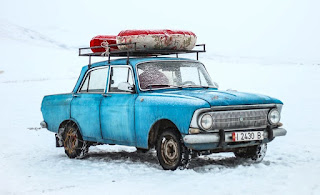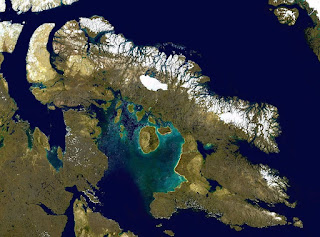10 Words You Will Only Hear in Canada: From Canuck to Poutine
Bunny hug
If you think that a Bunny hug is something you get from the Easter Bunny, well, you’d be mistaken. Like many others, most of us Canadians call a hooded sweatshirt with pockets on the front, a “Hoodie”, just like the ones Ryan Reynolds often wears. But if Ryan Reynolds was from Saskatchewan and not Vancouver, he would be wearing a “Bunny hug” instead. Go figure!
Canuck
Simply put, a Canadian is a Canuck. There are regular Canucks like me and my friends and there are famous Canucks like Seth Rogen and Jim Carrey. Michael Bublé is a Canuck as well. And, how about the Vancouver Canucks Hockey Team! Even Chris Hadfield, the famous Astronaut is a Canuck!
Chinook
Ever been to Calgary, Alberta? Well, if you were there in the winter and one minute the weather was cold and freezing and an hour later you were ready to put your shorts and flip-flops on, then you experienced a Chinook! A Chinook is a warm dry westerly wind that blows from the mountains and over the prairies in the winter, primarily around the area of Calgary, Alberta. Chinook is a native word meaning “snow eater” and it’s no wonder as it can raise those cold Alberta winter temperatures by nearly 20C in only an hour’s time!
Hooped
If you happen to venture into Alberta and see a Dodge Ram truck with a flat tire on the side of the road, in stopping to help out that cowboy, you may hear him say, “Well, that’s it, I’m hooped!” Hooped is a western Canadian slang word meaning, “out of luck” or “in a bad situation”. So, the next time you hear someone from western Canada say, “I’m hooped”, they’re not talking about hula-hoops unless they’ve gotten themselves stuck in one!
Loonie
Canada is filled with loonies, after all, they don’t call us “crazy Canucks” for nothing! However, the type of loonie I’m talking about is the gold-coloured loonie, a one-dollar Canadian coin. The loonie got its nickname from the image it has of the Canadian water diving bird, the Loon, depicted on its back. Did you know that not only is Canada filled with Loonies, it also has its share of Toonies as well? The Canadian Toonie is similar to a Loonie, but it differs by being both silver and gold-coloured and equal to not just one but two Canadian dollars.
So, the next time someone comes up to you and asks if you’ve got a "Loonie”, they’re not asking about your friend, they’re probably a Canadian!
Mickey
If you’re going to a party with a Canadian and they ask if you’re bringing along a “mickey”, they’re not talking about Mickey Rourke, they’re asking about a 375ml bottle of hard liquor, like a “mickey” of Grey Goose Vodka, that will fit into your coat pocket. Canadians give names to other sizes of liquor as well, for instance a case of 24 beer (ever heard of Molson Canadian?) is known as a “Two Four”, and a “twenty-sixer” is a 750ml (or 26 oz.) bottle of hard liquor such as Canadian Club Rye Whiskey. So, next time a Canadian invites you to a party, remember to bring “mickey” along with you!
Poutine
Most everybody loves French fries and Canadians are no different. We love French fries so much that we created our own version called Poutine. Poutine is a French-Canadian snack dish made up of French fries topped with cheese curds and gravy. Poutine was first served in Quebec sometime in the 1950’s but became popular across Canada in the 1990’s. In Quebecois, the word “poutine” is slang for “mess”. And a mess it is! Poutine can be found on menu’s in both Fine Dining restaurants as well as Food Truck vendors. I tried Poutine myself for the first time a couple of years ago from a Food Truck vendor on Canada Day in Vancouver, and while I enjoy eating French fries with gravy, I think I’ll take a pass on the cheese curds that are synonymous with Poutine. But just like Canadian actress Shay Mitchell (from the show Pretty Little Liars) who shared her dish of Poutine on her July 23rd, 2020 Instagram post, you may just love it!
Snowbird
Every year many Canadians, usually retired, head south to warmer climates for the winter, and these people are referred to as “Snowbirds”. A few of the more traditional destinations for Canadian Snowbirds to migrate to are Florida, California, and Arizona however some are now spending their winters in places much farther away such as Mexico, South America, and even as far away as Australia or New Zealand. Some of them own condominiums, some own part of a time-share property, while others have R.V.’s there year-round and fly down as soon as the cooler weather of late autumn hits then return to Canada in the spring. So, if you find yourself living in Canada and suddenly begin longing for warmer winter temperatures, you may want to follow the words of Canadian singer Anne Murray’s song “Snowbird” and “spread your tiny wings and fly away…” at least for a few of those cold wintry months.
Toboggan
To thoroughly enjoy those winters of the Canadian Great White North, you might want to take a ride on a toboggan just like Macaulay Culkin did in the film “Home Alone”, only I would suggest going outside in the snow instead of down a set of stairs! A toboggan is a long sled that curves up and back at the front and is usually made with narrow pieces of wood. A toboggan was traditionally used by the Innu and Cree of northern Canada as a means of transportation. Today a toboggan is used primarily for having fun sledding down hills of snow…outside Macaulay…outside…
Toque
If you’re planning on spending winter in Canada, you may want to buy a Toque or a Tuque or a Touque. Actually, they’re all the same thing. A “Toque” (that’s how I spell it), is a soft knit winter hat with a narrow brim or no brim at all, sometimes topped with a pom-pom and usually made of wool. Unlike other countries where people wear winter caps, or beanies, in Canada we wear a Toque, or a Tuque, or a Touque.
So the next time you run into a “Canuck” and they ask you to “Put on your Bunny hug, grab your toque and we’ll go get a mickey and a couple of poutine for a few loonies before we head out tobogganing”, you’ll know exactly what they’re talking about!
















































